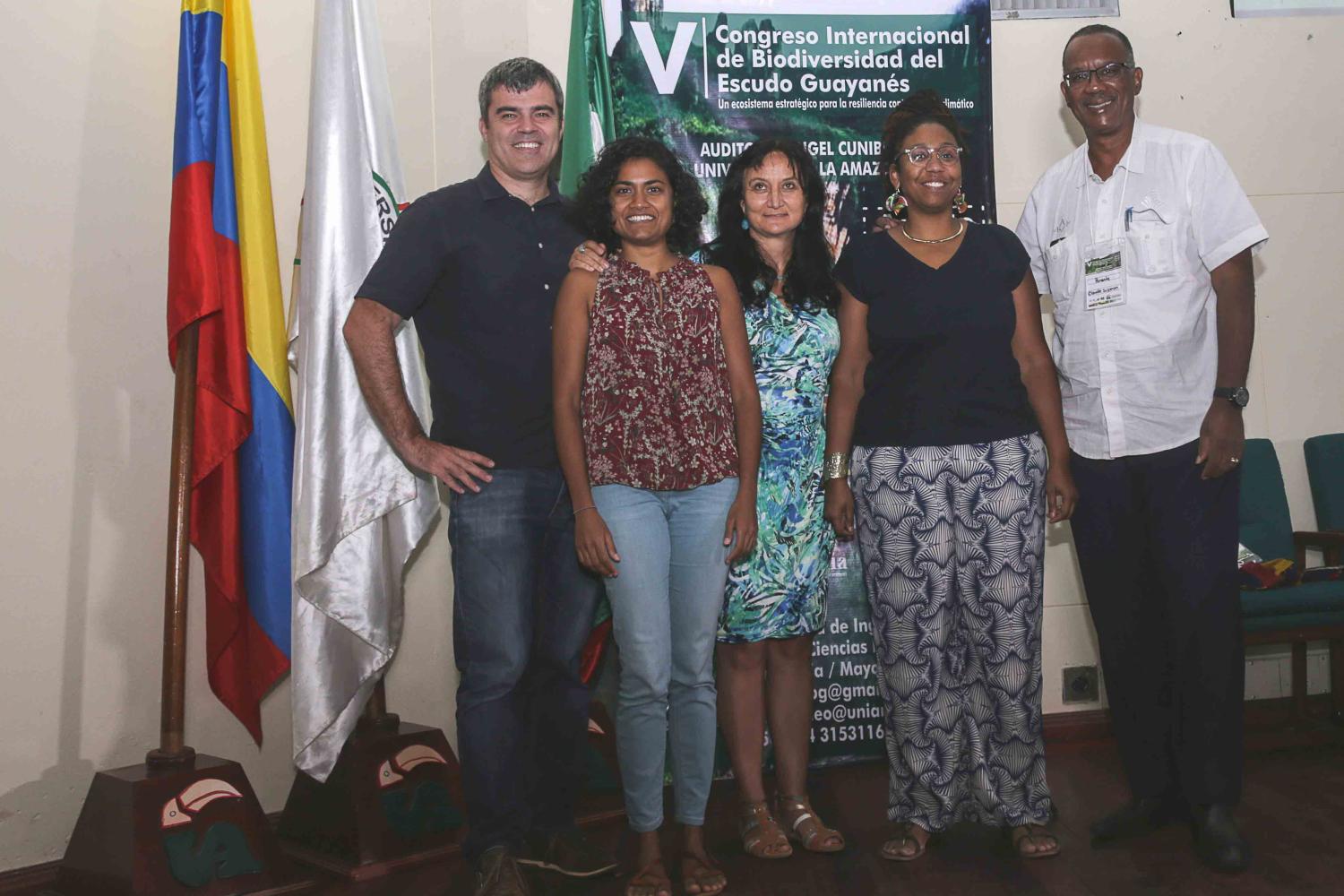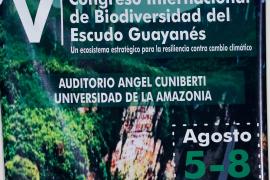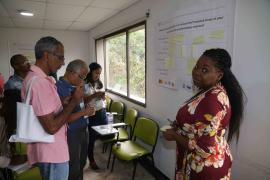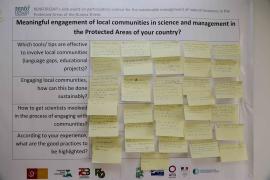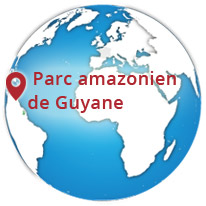Side event at the Vth International Congress on Biodiversity of the Guiana Shield held in Florencia, Colombia on “participatory science for the sustainable management of natural resources in the protected areas of the Guiana Shield”
Of the 4 thematic areas of the RENFORESAP project, the one on “participatory science for the sustainable management of natural resources in the protected areas of the Guiana Shield” was not going to be the subject of a regional workshop. Hence, the steering committee decided to organise a side event at the Vth International Congress on Biodiversity of the Guiana Shield which was held in Florencia, Colombia. It was important to seize the opportunity of this Congress and the presence of relevant stakeholders of the Guiana Shield at this meeting to share experiences and lessons learned on programs being carried out in the region on participatory science in the Amazonian environment.
Around 25 persons attended this side event which was divided into two sessions: a roundtable between representatives from each country of the Guiana Shield followed by a post-its session with all the participants. Speakers of the roundtable were asked to identify the challenges faced by each country in terms of participatory science for the sustainable management of natural resources in their Protected Areas. They were given 10 minutes for each pitch. As for the participatory part (post-its session), 4 posters were taped to the walls of the room with questions on the thematic area. The participants were divided into small groups which took turn in front of each poster to answer the questions.
Solicited by the IAPA program (Integration of Protected Areas of Amazonia), Arnaud ANSELIN, deputy director of the Amazonian Park, also participated, on the last day, in a round table aimed at highlighting the contributions of this initiative to the reinforcement of the network of protected area managers.
Parmi les quatre thématiques du projet RENFORESAP, celle de «la science participative pour la gestion durable des ressources naturelles dans les zones protégées du Plateau des Guyanes » ne fera pas l’objet d’un atelier régional. Le comité de pilotage a donc décidé d'organiser un événement parallèle lors du Ve Congrès International sur la Biodiversité du Plateau des Guyanes qui s'est tenu à Florencia, en Colombie. Cet atelier, rassemblant des participants de la Colombie, du Venezuela, du Brésil, du Guyana, du Suriname et de la Guyane, a permis de mettre en évidence les enjeux et les avancées dans chaque pays quant à l’implication des habitants, notamment des communautés amérindiennes et maronnes, dans la réalisation des projets scientifiques. Il était important de saisir cette occasion et la présence des parties prenantes du biome amazonien pour échanger sur les expériences et les enseignements tirés des programmes menés dans la région sur la science participative dans l'environnement amazonien.
Environ 25 personnes ont assisté à cet événement parallèle qui a été mené en deux étapes : une table ronde réunissant des représentants de chaque pays du Plateau des Guyanes, suivie d’une séance de « post-its » avec tous les participants. Les intervenants de la table ronde ont été invités à identifier les défis auxquels chaque pays est confronté en termes de science participative pour la gestion durable des ressources naturelles dans leurs zones protégées. Ils ont eu 10 minutes pour chaque intervention. En ce qui concerne la partie participative (post-its), 4 posters ont été disposés sur les murs de la salle avec des questions sur la thématique (méthodologies, sources de financement, défis, implications des communautés locales, restitutions des activités de recherches, etc.). Les participants ont été divisés en petits groupes qui se sont relayés devant chaque poster pour répondre aux questions.


